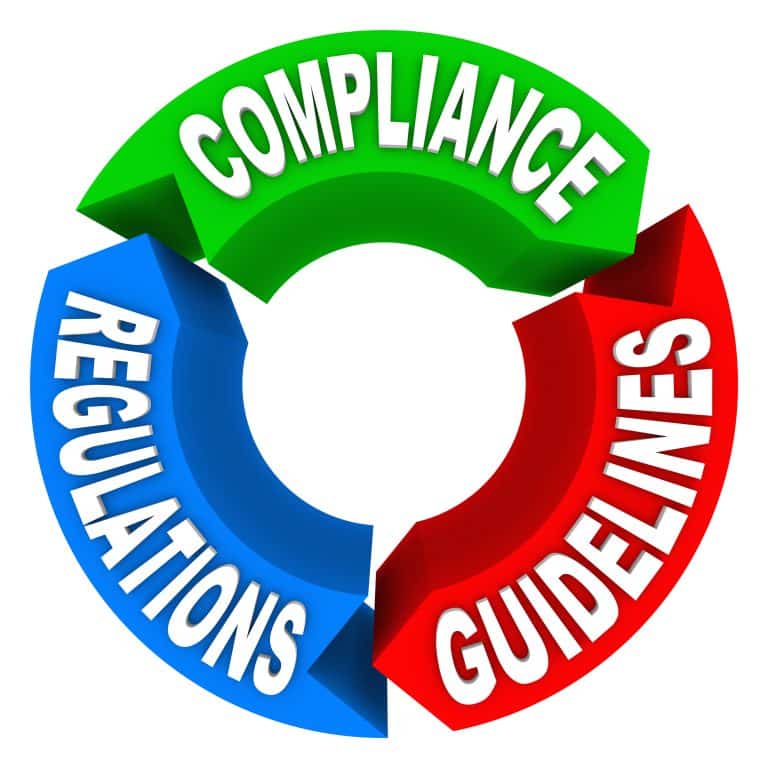This article will cover the following topics regarding the DOT drug and alcohol testing requirements that employers must adhere to:
Regulatory Overview
The United States Department of Transportation (DOT) maintains requirements for drug and alcohol testing for employers regulated by DOT. These employers can include trucking companies, bus companies, vessels for hire, pipeline operators, railroads, air carriers, and mass transit systems. The overall regulation governing these drug and alcohol testing requirements is known as 49 CFR Part 40.
The industries mentioned above are also regulated by various DOT agencies:
- Federal Aviation Admin (FAA)—For employers and employees in the aviation industry—14 CFR Part 120
- Federal Motor Carrier Safety Administration (FMCSA)—For carriers and commercial driver’s license holders (CDL)—49 CFR Part 382
- Federal Railroad Administration (FRA)—For employers and employees working in the railroad industry—49 CFR Part 219
- Federal Transit Administration (FTA)—For employers and employees working in the mass transit industry—49 CFR Part 655
- Pipeline and Hazardous Materials Safety Administration (PHMSA)—For operators and employees working in the pipeline industry—49 CFR Part 199
- United States Coast Guard (USCG; now with the Department of Homeland Security)—For employers and employees operating commercial vessels—46 CFR Part 16 and 46 CFR Part 4
In addition to 49 CFR Part 40, employers regulated by the above DOT agencies must also follow the listed agency regulations on drug and alcohol testing.
The types of employees regulated and considered safety sensitive can include pilots, flight attendants, aircraft maintenance, truck drivers, bus drivers, subway operators, ship captains, crew members, pipeline controllers, airline mechanics, locomotive engineers, and bus drivers. It is important to understand that the DOT drug testing requirements always apply to owner–operators in the trucking industry. Learn more about DOT Covered Employees.
A formal policy to address the company program and regulations is critical. The DOT Agencies and USCG require employers covered under their regulations to maintain policies in place that fully explain their drug and alcohol program. You must not only have policies but also make them available to employees covered under your DOT program.
49 CFR Part 40
This is the overall regulation for DOT drug and alcohol testing. This regulation describes required procedures for conducting workplace drug and alcohol testing for the federally regulated transportation industry. It is the how, what, and where of DOT drug testing. The specific agency regulations listed above describe who will be tested in each of the listed industries. These are employees performing safety-sensitive functions. The basic outline of 49 CFR Part 40 is as follows:
- Administrative provisions
- Employer responsibilities
- Urine-collection personnel
- Collection sites, forms, equipment, and supplies used in DOT urine collections
- Urine specimen collections
- Drug-testing laboratories
- MRO and the verification processes
- Split-specimen tests
- Problems in drug tests
- Public interest exclusions (PIE)
- Alcohol testing personnel
- Testing sites, forms, equipment, and supplies used in alcohol testing
- Alcohol screening tests
- Alcohol confirmation tests
- Problems in alcohol testing
- Substance abuse professionals and return-to-duty processes
- Confidentiality and release of information
- Roles and responsibilities of service agents
DOT Random Testing
Random testing is required and is a huge component of the DOT requirements for drug and alcohol testing. All the DOT agencies require random drug testing of the employees covered by their regulations. DOT publishes a short booklet titled Best Practices for DOT Random Drug and Alcohol Testing. Anyone running a DOT random testing program should review this booklet. The main reason for random testing is safety; other reasons are that testing does the following:
- Helps employers identify workers with substance abuse issues and facilitate their treatment.
- Allows employees to easily say no to illegal drug use: “No, thanks. They drug test at work.”
- Reduces employer liability.
- Provides a fair way of testing.
The minimum required random testing rates for each DOT agency are established each year based on statistics from the previous years’ drug and alcohol testing. These random rates are published by ODAPC on its Random Testing Rates web page.
Compliance with the DOT random testing program and best practices is a big part of surviving an audit of your DOT drug and alcohol testing program. Employers can utilize the services of a third-party administrator to help manage a stand-alone random testing program or a consortium random testing program. Owner–operators in the trucking industry must use a consortium random testing program.
Learn more about random drug testing from National Drug Screening Inc.
DOT Return-to-Duty Process
For safety reasons, the use of alcohol on the job or the use of illicit drugs cannot be tolerated in the transportation industries or any industry. A covered DOT employee who tests positive or refuses to take a required test must be removed from their covered safety-sensitive position.
Once removed from safety-sensitive duties, the employee must find a DOT-qualified substance abuse professional (SAP) before they can return to any DOT safety-sensitive position. The dedicated SAP will help the individual return to safety-sensitive work.
National Drug Screening has published an article to help DOT-covered employees with their return-to-duty process. See Finding a Substance Abuse Professional for your DOT Violation.
After completion of the required SAP program, a DOT-covered employee may be allowed back into this type of job with a return-to-duty test. This testing is conducted on employees who have refused a required test or have tested positive on a drug or alcohol test. This type of test ensures that individuals have a negative test result before going back to their safety-sensitive duties. Once these individuals have reclaimed their safety-sensitive position, they must then undergo follow-up testing. After a return-to-duty test, a follow-up test ensures that individuals stay clean when fulfilling their safety-sensitive duties. The requirement is that at least six tests be completed in the first 12 months following the employee’s return to safety-sensitive duties. Follow-up testing can last up to 60 months, and the follow-up testing frequency and total number of tests is determined solely by the SAP.







